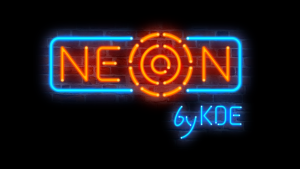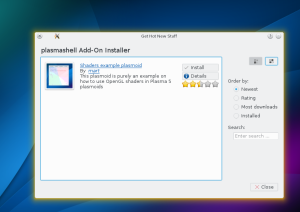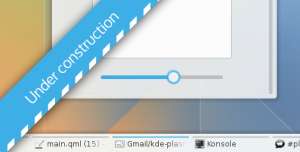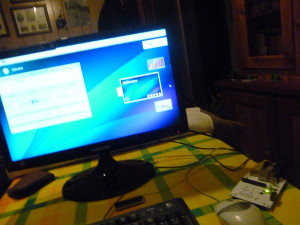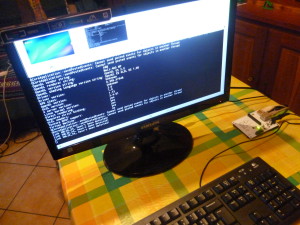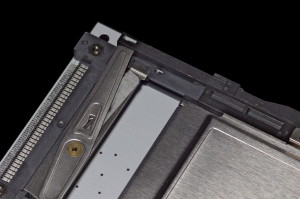This is the second part of my ramblings about the Plasma 5 release, just after it come out.
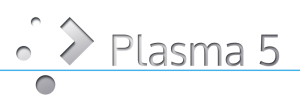
This is a very important moment, after a massive amount of work.
What are the most important things that can make a free software project successful or not?
To me are principally two: user experience and developer experience.
User experience
The first release of Plasma 5 will start to make use of the work of a newly formed group in the KDE community: the Visual Design Group.
I’m very impressed how they managed to get a firm grip of many issues that are always been a problem in KDE software.
They are not only doing nice pictures, but rather starting to give real guidance to the design direction of the future Plasma and applications by KDE.
On the 5.0 release, the most visible thing will be the Breeze theme, that while still far to the final vision, it starts to show the clean and functional style (funny trivia: I remember discussing on the VDG forum about pure flat design versus using 3D effects for “interactive” controls, to give depth and intuitiveness for interactive areas… months before Material was presented. Those guys are definitely onto something.)
But it of course doesn’t stop to a theme and some icons:
what is more deep and a long term plan is to review the look, refinement and usability of pretty much.. everything.
Good design means also every single application has a clean and functional layout, and its “interaction flow” is logic, intuitive and derived from user needs rather than the technical details of the application.
An example of those things still to come is the new layout of System Settings that will come in little piece by piece, one by one in the future releases (The 5.0 release already has a new categorization, each release will move it a step more towards the final design).
Freedom, in all aspects
A big challenge in the design of Plasma 5 is that while providing a very simple and appealing experience out of the box, our central value is to put our priority in serving the different exigences of different kinds of users, because, as for devices, one size does not fit all.
The Plasma workspace is now even more flexible, on different devices it will sport completely different default user interfaces, because different use cases and different input methods require a different way to interact and a different way to present information (as lately even Microsoft discovered, in the very hard way).
And not only that, on your desktop or laptop, you can “build” a workspace experience as you please, optimized to your preferences.
We will never force you to a panel in a particular side of the screen, or to one task manager mode (taskbar vs dock) or to a particular desktop layout.
We well know that this makes the design process more difficult, but often the “easy” solutions are not necessarily the “correct” ones.
We give you a desktop that can adapt to you, rather than giving you a desktop you have to adapt to.
Developer experience
In later years, with the bigger emphasis on the user experience, the experience for developers started to take the back seat.
But we are a free software project, and its success is measured not only in users, but also in how many people would want to engage in an active way, and how comfortable are developers to work on the projects.
Being built on a foundation as strong as Qt, the software by KDE can also offer amazing tools for developers.
The recently released KDE Frameworks 5 is an important step in this direction: the KDE libraries are not anymore a big monolith but a set of very small, useful and independent libraries.
The base of the Plasma Shell is a framework as well: the Plasma framework, composed principally by two things:
- The Plasma library: is the good old libplasma.. but it’s way slimmer and more focused than the KDE4 version: It doesn’t offer graphical widgets anymore, and doesn’t make any assumption on what graphic engine will be used (One could even build a shell completely based upon QWidgets with it, just because :p).
It continue to provide easy access to packages, dataengines, asynchronous services and the save and restore functionalities of the layout, known as the Corona.
The library solves problems that are out of scope for QML: from a surface with interactive graphical elements in it, it brings it to a “full featured desktop shell”.
- The second part is instead a set of runtime components, of QML bindings that offer QML access to the Plasma facilities such as dataengines and svg themes and a set of graphical components to use in QML plasmoids and applications, such as buttons and text fields, that are converging, and will converge more and more with the upstream QtControls project.
- In future releases there will be a comeback of the kpart to easily include qml-based informational dashboards into applications, and a runtime to launch plasmoids as simple independent mini applications.
Looking at the future
So, what are we planning for the future?
The stable, default core Desktop project will become more and more stable and polished, but the development focus will touch other use cases as well.
The Plasma Active port to Frameworks 5 is ongoing, as well the Plasma Mediacenter port, so the “different shell for different devices” story will be complete.
Of course our focus is not only about KDE on different devices, but also making KDE work tightly integrated with other kind of devices, thanks to projects such as KDE Connect. Interestingly, The Plasma Workspace 4.x series is today the environment with the tighter integration with smartphones (only with the next releases of their operating systems Apple is catching up, with a quite similar feature set).
You can expect this integration work being even more complete in future releases of Plasma 5.
Finally, the artwork presented in 5.0 is only a preview of what is still to come from the Visual Design Group: more icons, more complete widget set, more and more applications will receive a makeover look-wise and most importantly usability-wise.





